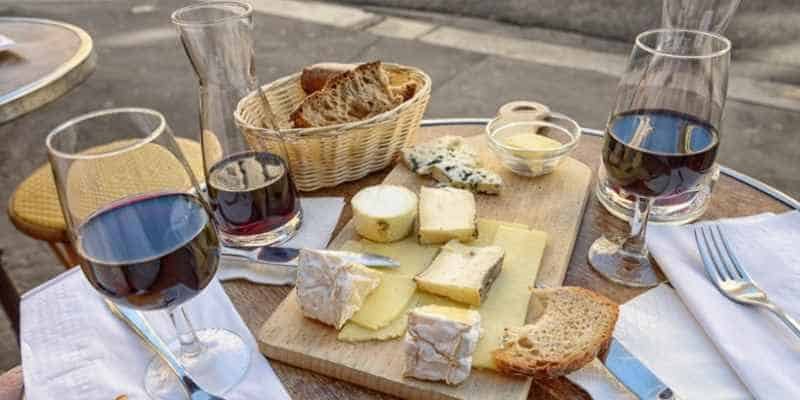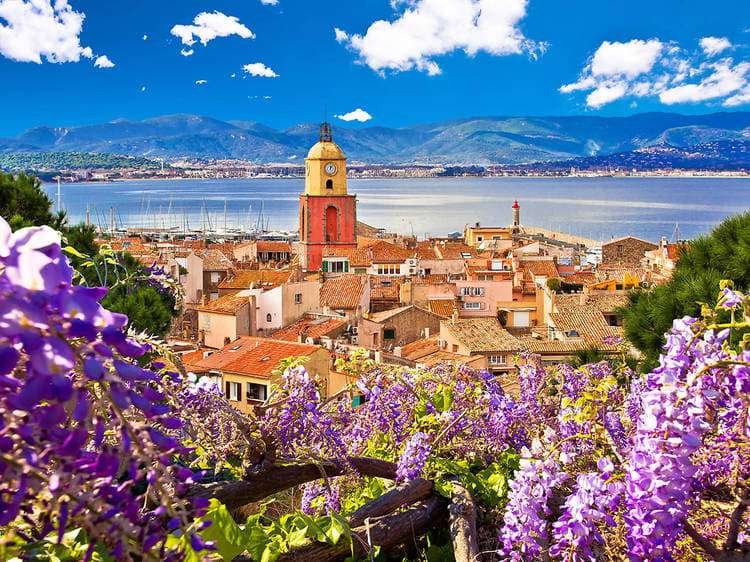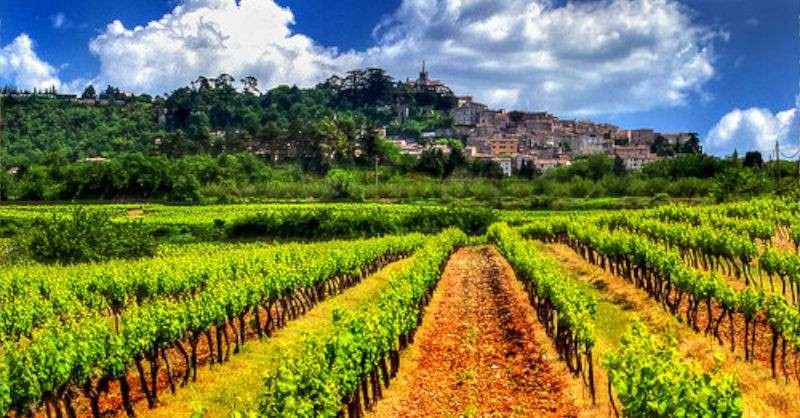I love France, its culture, history, literature, food, and wine, and exploring the grand castles and masterpieces of medieval and modern art. I am an artist and appreciate French art. I also enjoy cooking gourmet foods and love French cuisine. I have worked as a chef in many 4-star restaurants and French wine has been part of my recipes for many years.
This article is part of a series that explores the most popular wine regions of France, with their history, rich culture, and their many castles and cathedrals. Each wine region has its own wine and local cuisine. Wine tours are available as well as tours of the castles and chateaus. Many of the hotels have spas and winery tours included in the trip.

France is the second largest producer of wine in the world and is the number one exporter of wines by value. France has ideal growing conditions and the vineries have the ideal weather conditions for grapes. If you are traveling through France or staying in one of the famous hotels and wineries, there is no better place to learn about wine making. There are many restaurants in all the wine regions with world famous gourmet cuisine to be enjoyed during your stay. Be sure to explore the local architecture, castles, cathedrals, art museums, and the many festivals.
Provence Region

(Source: Fodor’s, Travel & Leisure)
Provence-Alpes-Cote d’Azur, is a beautiful scenic region in southeastern France bordering Italy and the Mediterranean Sea. It is known for its diverse landscapes from the southern Alps and Camargue Plains, to the rolling vineyards, olive fields, pine forests, and lavender fields. Provence was made famous in the United States by Peter Mayle’s book, “A Year in Provence.” It has become a favorite vacation destination for travelers to France.
To the south is the Cote d’ Azur or as we know it as the French Riviera. Here you can stop off and enjoy the luxury resorts, beaches, boating, casinos, and world class cuisine and wines. You will find the elegant city of Nice and glamorous towns such as Marseilles, Monaco, Saunt-Tropez, and Cannes that line the coast.
Other places to visit while in Provence are the numerous old villages that date back many centuries, such as Les Baux-de-Provance which sits on a hill just below the magnificent ruines of an old castle. This stone village also has homes dating back to the 15th century and a beautiful old church.

Provence has numerous castles to visit. The beat restored castles in Provence include: Citadelle de Sisteron and the different chateaus Murs, l’Emperi, Queylas, Entrechaux, Greoux Les Bains, and Napoule.
Leading art museums in Provence include:
- Musee du Petit Palais, Avignon
- Musee de Beux Arts, Marseille
- Musee Cantini, Marseille
- Musee Granet, Mazarin
- New National Museum, Monaco
- Musee des Beaux Arts, Nice
- Foundation Maeght, Nice
Major festivals in Provence include:
- Monaco Grand Prix Formula One racing
- Cannes International Film Festival, one or the leading film festivals in the world
- Nice Carnival, one of the world’s top festivals

Cannes International Film Festival
The lavender fields of Provence should not be missed. The sight and scent of the lovely lavender farms has become extremely popular. Where you can visit a local lavender distillery, and harvest your own lavender to make essential oil to take home.

Provence Wine

(Source: Appellaation d’origine contolee, AOC)
Provence has been a major wine producing region for at least 2,600 years under both Greek and Roman rule.
The beautiful French wine growing region of Provence is known for its rose wines which make up over one half of wine production. Red wines such as cabernet savignon make up about one third of production, leaving white wines with a small percent of production. The Côtes de Provence is the largest AOC followed by the Coteaux d’Aix-en-Provence. The Bandol region near Toulon is one of the more internationally recognized Provençal wine regions.

The large Cotes de Provence AOC includes 85 communes between the towns of Nice and Marseille and is responsible for nearly 75% of all Provençal wine with rosés alone accounting for 80% of that total. Grenache is the dominant grape of the region, comprising at least 60% of the blend, with Syrah, Cinsault, Mourvedre, Tibouren, Carignan, and Cabernet Sauvignon playing supporting roles.
The Coteaux d’Aix-en-Provence AOC is the second largest AOC in Provence, covering 50 communes in the west and northwestern part of the region. Here rosé accounts for around 35% of the AOC’s production with Grenache, Cinsault, and Mourvedre being the dominant varieties and Counoise, Carignan, Syrah, and Cabernet Sauvignon rounding out the blends.
Located in the hilly central region of Provence, rosés account for almost two-thirds of the production in the Coteaux Varois AOC. Here the wines are blends of Grenache, Syrah, and Mourvedre accounting for at least 80% of the wine with Cinsault, Cabernet Sauvignon, and Carignan permitted to fill in the remainder.
The Bandol AOC in southwest Provence is dominated by the late-ripening Mourvedre grape which produces well in the limestone, silicon rich stony soils of the region. While the AOC produces mostly red wines, at least 33% of its yearly production is made up of rosé wines with Grenache, Cinsault, Syrah, and Carignan playing supporting roles to Mourvedre.
Around the city of Nice in southeast Provence is Bellet AOC where the hot summers are tempered by the cooling sea coast breeze off the Mediterranean. Here rosé is made in roughly equal proportions with the red wines made from Braquet, Folle Noire, Grenache, and Cinsault.

Rose wine
Rosés account for the vast majority of Provence’s wine production, ranging from half to almost two thirds of all the wine produced in the region. The rosés of Provence are often known for their food and wine pairing matches with the local Mediterranean cuisine of the region, particularly the garlicky aioli sauces, seafood, and tangy bouillabaisse stews that are the hallmark of Provençal cuisine.
A rosé is a type of wine that incorporates some of the color from the grape skins, but not enough to qualify it as a red wine. It may be the oldest known type of wine, as it is the most straightforward to make with the skin contact method. The pink color can range from a pale “onionskin” orange to a vivid near-purple, depending on the grape varieties used and winemaking techniques.

Cabernet Sauvignon wine
Cabernet Sauvignon is one of the world’s most widely recognized red wine grape varieties. Its popularity is often attributed to its ease of cultivation—the grapes have thick skins and the vines are hardy and naturally low yielding, budding late to avoid frost and resistant to viticultural hazards such as rot and insects—and to its consistent presentation of structure and flavours which express the typical character (“typicity“) of the variety. In the 19th and 20th centuries, Cabernet Sauvignon’s reputation was built on its ability to age and develop in the bottle.
The classic profile of Cabernet Sauvignon tends to be full-bodied wines with high tannins and noticeable acidity that contributes to the wine’s aging potential. Cabernet Sauvignon produces wines with blackcurrant notes that can be accompanied by green bell pepper notes, mint, cedar, black cherry, and black olive notes.
Art of Provence

Vincent Van Gogh
(Source: Mediterranee de Courbet a Matisse, Grand Palais)
Provence is famous for its beautiful scenery and light colors. Because of this, the region is associated with more than its share of gifted artists, such as Vincent Van Gogh, Paul Cezanne, and Pablo Picasso.
Significant art museums in Provence include:
- Adolphe Monticelli (1824–1886) was born in Marseille. His work influenced Vincent van Gogh who greatly admired him.
- Paul Cézanne (1839–1906) was born in Aix-en-Provence, and lived and worked there most of his life.
- Vincent van Gogh (1853–1890) lived little more than two years in Provence, but his fame as a painter is largely a result of what he painted there.
- Auguste Renoir (1841–1919) visited Beaulieu, Grasse, Saint Raphael, and Cannes, before finally settling in Cagnes-sur-Mer in 1907.
- Henri Matisse (1869–1954) first visited St. Tropez in 1904. In 1917 he settled in Nice.
- Pablo Picasso (1881–1973) spent each summer from 1919 to 1939 on the Côte d’Azur, and moved there permanently in 1946.
- Claude Monet (1840–1927) visited Menton, Bordighera, Juan-les-Pins, Monte Carlo, Nice, Cannes, Beaulieu, and Villefranche, and painted a number of seascapes of Cap Martin, near Menton, and at Cap d’Antibes.
- Paul Signac (1863–1935) visited St. Tropez in 1892, and bought a villa, La Hune, at the foot of citadel in 1897. It was at his villa that his friend, Henri Matisse, painted his famous Luxe, Calme et Volupté” in 1904.

Claude Monet in Provence

Pablo Picasso in Provence

Henri Matisse in Provence

Paul Cezanne in Provence
Cuisine of Provence

(Source: Lulu’s Provencal Table, Richard Olney)
The cuisine of Provence is the result of the warm, dry Mediterranean climate, the rugged landscape, good for grazing sheep and goats but, outside of the Rhône Valley, poor soil for large-scale agriculture, and the abundant seafood on the coast.
The basic ingredients are olives, olive oil, garlic, sardines, rockfish, sea urchins, octopus, lamb, goat, chickpeas, and local fruits, such as grapes, peaches, apricots, strawberries, cherries, and the famous melons of Cavaillon.
The fish frequently found on menus in Provence are the rouget, a small red fish usually eaten grilled, and the loup often grilled with fennel over the wood of grapevines.
- Aïoli is a thick emulsion sauce made from olive oil flavoured with crushed garlic. It often accompanies a bourride, a fish soup, or is served with potatoes and cod.
- Bouillabaisse is the classic seafood dish of Marseille. The traditional version is made with three fish: scorpionfish, sea robin, and European conger, plus an assortment of other fish and shellfish, such as John Dory, monkfish, sea urchins, crabs. and sea spiders included for flavour. The seasoning is as important as the fish, including salt, pepper, onion, tomato, saffron, fennel, sage, thyme, bay laurel, sometimes orange peel, and a cup of white wine or cognac. In Marseille the fish and the broth are served separately—the broth is served over thick slices of bread with rouille.
- Daube provençale is a stew made with cubed beef braised in wine, vegetables, garlic, and herbes de provence. Variations also call for olives, prunes, and flavouring with duck fat, vinegar, brandy, lavender, nutmeg, cinnamon, cloves, juniper berries, or orange peel.

- Escabeche is popular seafood dish; the fish (usually sardines) are either poached or fried after being marinated overnight in vinegar or citrus juice.
- La pissaladière is a speciality of Nice. Though it resembles a pizza, it is made with bread dough and the traditional variety never has a tomato topping.
- Ratatouille is a traditional dish of stewed vegetables, which originated in Nice.
- Socca is a speciality of Nice, it is a round flat cake made of chickpea flour and olive oil, like the Italian farinata.
- Rouille is a mayonnaise with red pimentos, often spread onto bread and added to fish soups.
- The âteau des Rois is a type of Epiphany cake found all over France; the Provençal version is different because it is made of brioche in a ring, flavoured with the essence of orange flowers and covered with sugar and fruit confit.

Avignon

Palace of the Popes, Avignon
Avignon in the Provence-Alpes-Côte d’Azur region of Southeastern France, located on the river Rhône. It is France’s 35th largest metropolitan area with 459,533 inhabitants (2020). Between 1309 and 1377, during the Avignon Papacy, seven successive popes resided in Avignon and in 1348 Pope Clement VI bought the town from Joanna I of Naples. Papal control persisted until 1791 when during the French Revolution it became part of France. The historic center, which includes the Palais des Papes, the cathedral, and the Pont d’Avignon, is a UNESCO World Heritage Site.
Nice

Nice is located on the French Riviera at the foot of the French Alps. It is the second-largest French city on the Mediterranean coast and second-largest city in the Provence-Alpes-Côte d’Azur region after Marseille. The metro population is 944,321.
Nice is a significant cultural center in France and a popular tourist destination for its architecture, art, boating, food, wine, festivals, entertainment, and shopping.

Nice Carnival
Marseille

Situated in the Provence region of southern France, it is located on the coast of the Gulf of Lion, part of the Mediterranean Sea, near the mouth of the Rhône River. Marseille is the second most populous metro area in France, with 1,903,173 inhabitants in 2020. Founded around 600 BC by Greek settlers from Phocaea, Marseille is the oldest city in France, as well as one of Europe’s oldest continuously inhabited settlements.
Marseille is a city that has its own unique culture and is proud of its differences from the rest of France. Today it is a regional center for culture and entertainment with an important opera house, 24 art, historical, and maritime museums, 42 theaters, beaches, and architecture.
The port is also an important arrival base for millions of people each year, with 2.4 million including 890,100 from cruise ships. Marseille is one of the most visited cities in France, with 4.1 million visitors in annually.
Marseille has also been important in the arts. It has been the birthplace and home of many French writers and poets. The small port of l’Estaque on the far end of the Bay of Marseille became a favorite haunt for artists, including Auguste Renoir and Paul Cézanne.

French Riviera

The French Riviera, known in French as the Côte d’Azur, is the Mediterranean coastline of the southeast corner of France. It extends from Toulon to Menton at the France–Italy border in the east. The French Riviera contains the seaside resorts of Cap-d’Ail, Beaulieu-sur-Mer, Saint-Jean-Cap-Ferrat, Villefranche-sur-Mer, Antibes, Juan-les-Pins, Cannes, Saint-Raphaël, Fréjus, Sainte-Maxime, and Saint-Tropez.
The French Riviera is a major yachting and cruising area with several marinas along its coast. Each year the Riviera hosts 50 percent of the world’s superyacht fleet. As a tourist center, the French Riviera benefits from 330 days of sunshine per year, 71 miles of coastline and beaches, 18 golf courses, 14 ski resorts , casinos, art museums, and 3,000 restaurants. It hosts 14 million tourists annually.

Monaco

Monaco is a major tourist destination and the playground of the rich and famous. It is an indeendent sovereign state. Monaco has the world’s lowest poverty rate and the highest number of millionaires and billionaires per capita in the world. The economy of Monaco is reliant on banking, finance, and as a tax haven. Monaco, situated on the French coast of the Mediterranean Sea, is a popular resort, attracting tourists to its casino and pleasant climate. Monaco is known for its resorts, festivals, Grand Prix auto racing, sports, art museums, opera, symphony, and ballet.

References
Fodor
National Geographic
Travel & Leisure
Conde Nast Traveler
Wikipedia



